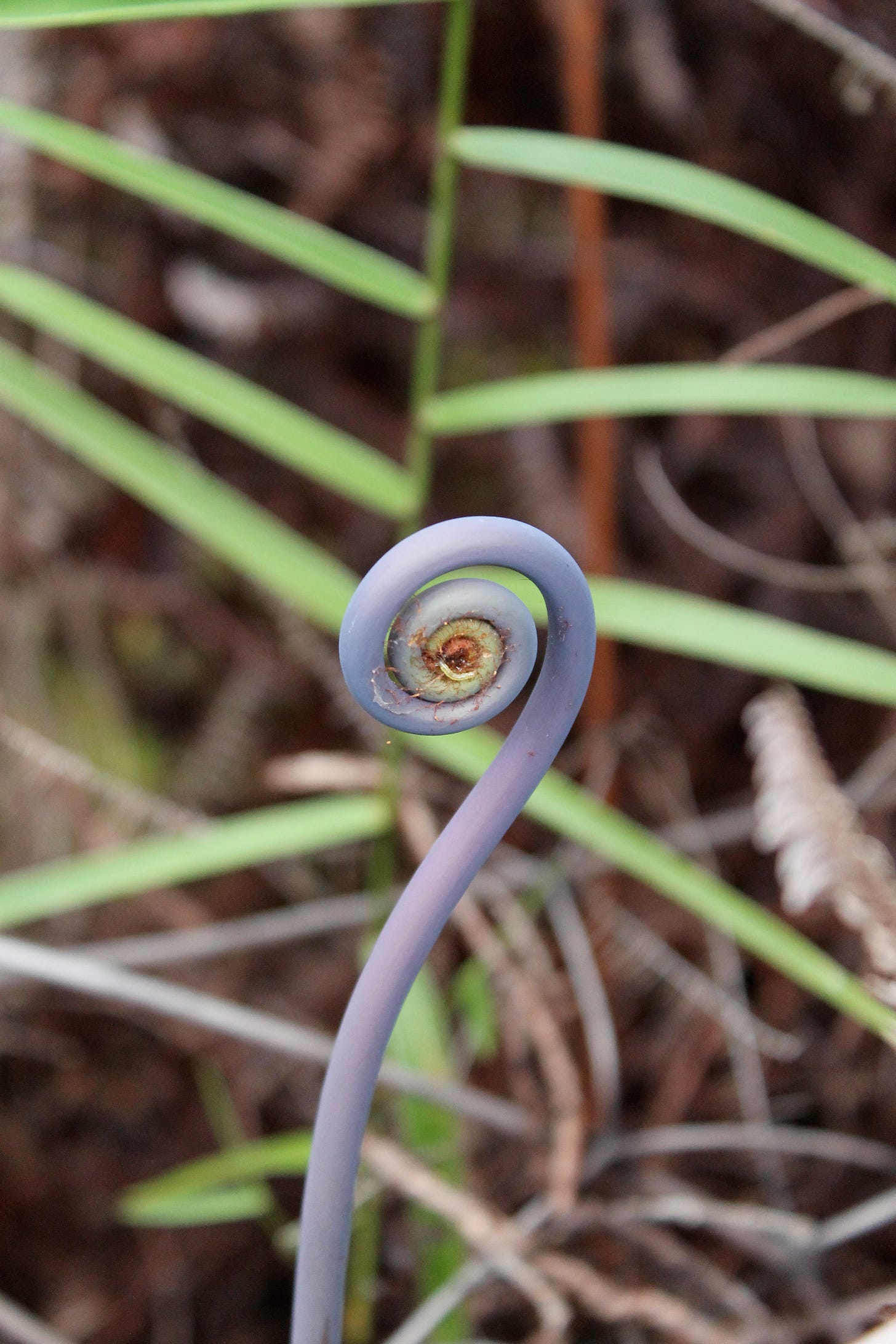Many years ago, in Hana, Maui’s paradise at the end of a storied road, Kepa Lind, Hana’s unofficial cultural ambassador, explained that kids in this small community started learning to fish when they could walk.
“Want to learn Hawaiian throw-net fishing?” he asked Kai, tussling his hair.
My kid heard throw and ran toward the sea.
Photo by Michele Bigley
With salty hair and an easy grin, Kepa led us down to Hana’s main beach, basically a cove hugged by cliffs. It wasn’t a pretty beach, rather a functional one, though that didn’t stop a parade of tourists’ toes from splashing into the water and disturbing the fishermen. This complex relationship with tourists was something Kepa was attempting to bridge by taking families like us out to learn how to fish, so that when we saw fishermen on the shores, we could be mindful of giving them space.
On the darkened sand, he demonstrated how to wind the net around our arms, use our bodies to cast the net wide over the top of the sea, and let the thick rope settle, catching whatever fish sailed in on the most recent waves. As he reeled back his empty net, Kepa told us the fish heard the net and scattered, making it hard to keep fishing after the first couple tries. “Learned behavior,” he laughed, “like Hawaiians.”
Kai tossed his net once, saw the large rope starting to knot on the sand, and then asked if he could go play in the waves with Eddie and Nikko. The toil of working for something without guaranteed success especially challenged my kid. Unlike me, Kai needed early successes to proceed. I always imagined I’d be teaching him skills I valued in myself—grit, determination, taking on challenges even when there was no way to know the long-lasting effects.
“Kai, pick up the net,” I said, “You have to keep trying. No one learns how to do something in one try.”
Kepa placed a thick hand on my shoulder. “My son is just like that. They got to get hungry. You give a boy a fish, ha! You teach the boy to fish, he eats forever, yah.”
Teaching our kids to fish
As parents, grandparents, aunts, uncles and teachers, it’s our job to teach our kids to metaphorically fish. Food justice advocates also argue we should be teaching them to forage and grow produce. In a world where our soils will be affected by a warming climate, where there are so many humans on the planet who need healthy food, advocates argue our best interests to start teaching them how to feed themselves early.
Maybe we aren’t hungry enough yet to commit to teaching our kids to attend to the natural environment. When our bananas come from Trader Joe’s, our rice from Costco, and our meat is all wrapped up and ready to go, what’s the point?
With the pandemic leaving too many Americans jobless, scientists are predicting in the US that a food shortage might be immanent.
Though many people might not yet be that hungry, organizations like the Farm to School network are making sure our kids know how to fish—metaphorically speaking.
NGOs are planting gardens
Alice Waters’ Edible Schoolyard might have planted the first the farm to school seeds in 1995, but since then schools around the globe have stepped up to the challenge. Many schools now realize that part of educating our kids to become functioning human means teaching them to grow their own food. These US-based organizations and these global ones are helping our planet’s kids learn how to grow their own food.
For some of you this might be enough. Maybe the kids in your life get to work in a bountiful garden, and you think that’s plenty, but what about the school up the street? Do they have a garden? Do those kids know how to feed themselves?
This week’s action
My kids’ elementary school had a tiny garden when we first arrived. At that point, I was teaching an environmental activism class for the school and knew that the kids needed a hands on relationship with the Earth. So, a group of us parents got together, plotted out what supplies we’d need, and how much it would cost, and organized a fundraiser and a work day to construct an edible schoolyard for the kids. The children had a blast helping to shovel dirt, grow starts, and then harvest their veggies for a meal. The garden became a safe place for kids to talk, rest, read, and find some peace.
This week, we’re going to scope out the garden situations at the public schools near your house.
Do they have gardens? Are they being tended? Will they be ready to go in spring in the northern hemisphere? If not, what do they need to help their gardens grow?
Collectively, let’s see if we can help create safe spaces for kids to grow food. Maybe reach out to the parent association at the school to see what’s needed to start (or restart), or expand the existing garden.
If you have time, connect the school with a local NGO in your community that helps build gardens and see if you can help a garden grow for kids who might not know how a seed sprouts into a feast. Think about the impact you can have by helping a whole school learn to grow food.
My holiday gift to you
Happy Holidays, my friends! For every subscriber to this newsletter, I’m planting a tree in your honor.
Want us to plant a forest? Then share this and get some friends to subscribe. For all new subscribers who sign up by December 16, I’ll plant two trees.
Thanks for being a part of this community.





